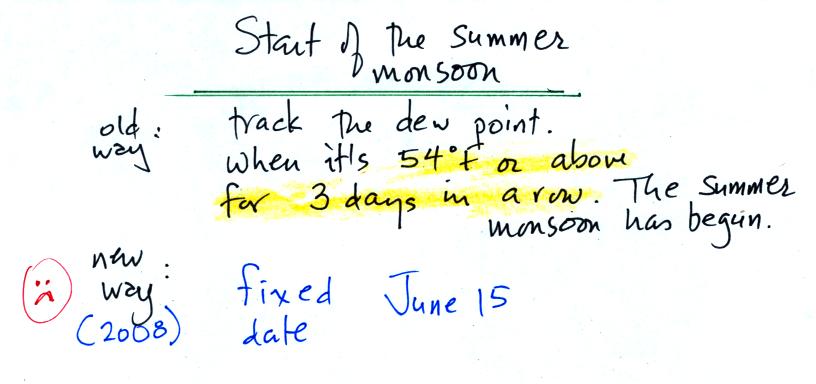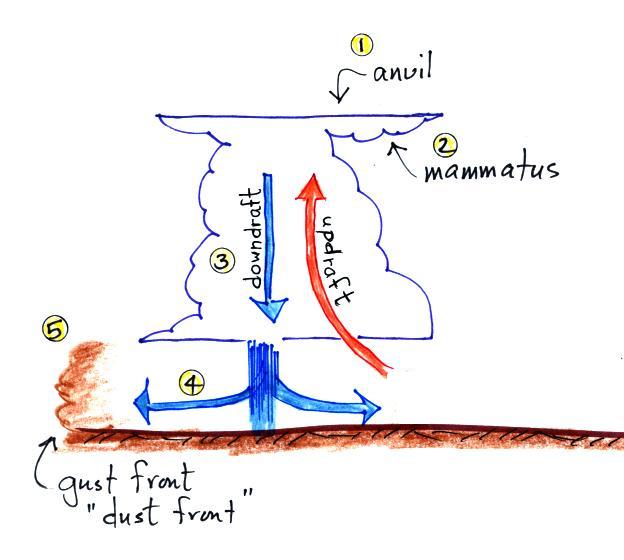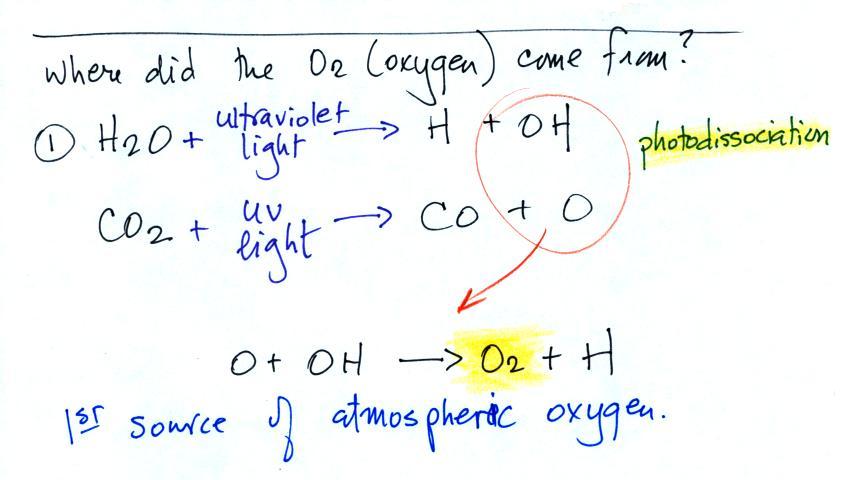
Don't worry
about remembering all of the gases listed above. Volcanoes emit a
lot of
water vapor and carbon
dioxide. As
the earth began to cool the water vapor condensed and began to create
and fill oceans. Carbon dioxide dissolved in the oceans and was
slowly
turned into rock. Smaller amounts of nitrogen (N2) are emitted by
volcanoes. Nitrogen is relatively unreactive and remained in the
air. Nitrogen concentration built up over time. We'll learn
a little more about sulfur dioxide when we cover air pollutants.
Volcanoes didn't add any of the oxygen that is the
atmosphere.
Where did that come from?
The oxygen is thought to have first
come from
photodissociation of
water vapor and carbon dioxide by ultraviolet light (the high energy
UV light is able to split the H20
and CO2
molecules into
pieces). The O and OH then react
to form O2 and H.
By the way I don't expect you to remember
the chemical formulas in the example above. It's often easier and
clearer to show what is happening in a chemical formula than to write
it out in words. If I were to right the equations down, you
should be able to interpret them. It's probably also good to
remember that
ultraviolet light is capable of breaking molecules apart.
Once molecular oxygen (O2) begins to accumulate in the
air UV light can split it apart to make atomic oxygen (O). The
atoms of oxygen can react with molecular oxygen to form
ozone (O3).
Ozone in the atmosphere began to absorb ultraviolet
light and life forms could safely move from the oceans (which offered
protection from UV light in the
absence of ozone) onto land.

Photosynthesis is the 2nd
(photodissociation of CO2
and H2O
was the 1st) and now the main source of atmospheric oxygen.
Note below that combustion is really just the opposite of
photosynthesis.

We burn fossil fuels (dead,
undecayed plant material) to generate energy.
Water vapor and carbon dioxide are by products. Combustion is a
source of CO2.
We'll see these two equations again when we study the greenhouse
effect (CO2 is
a
greenhouse gas ) and global warming.















